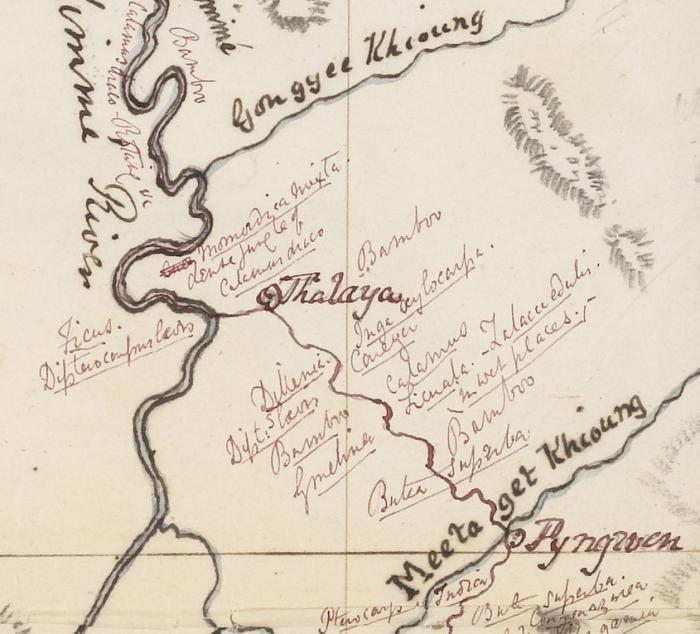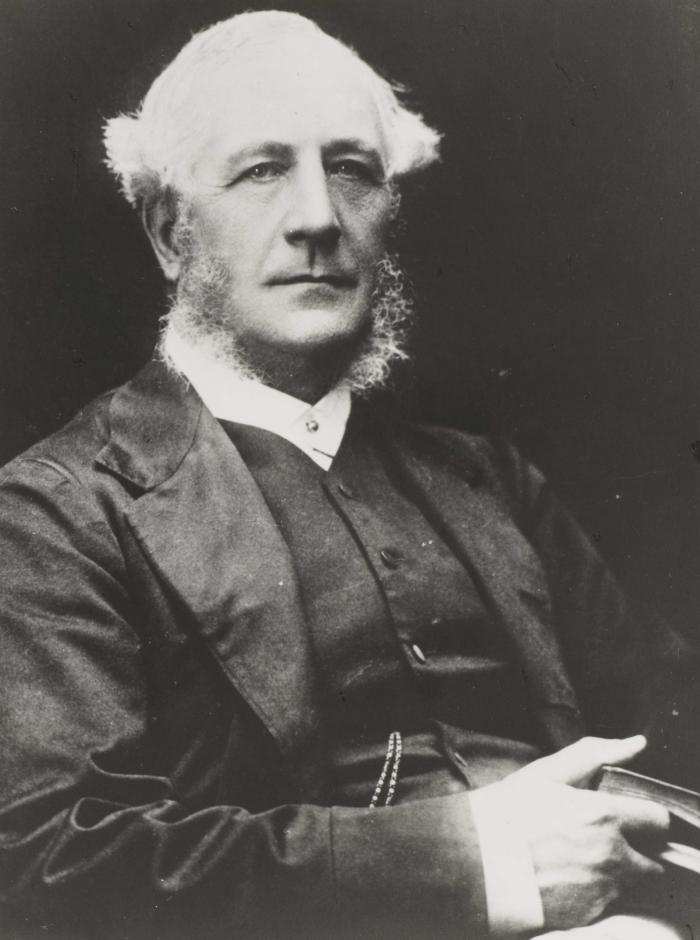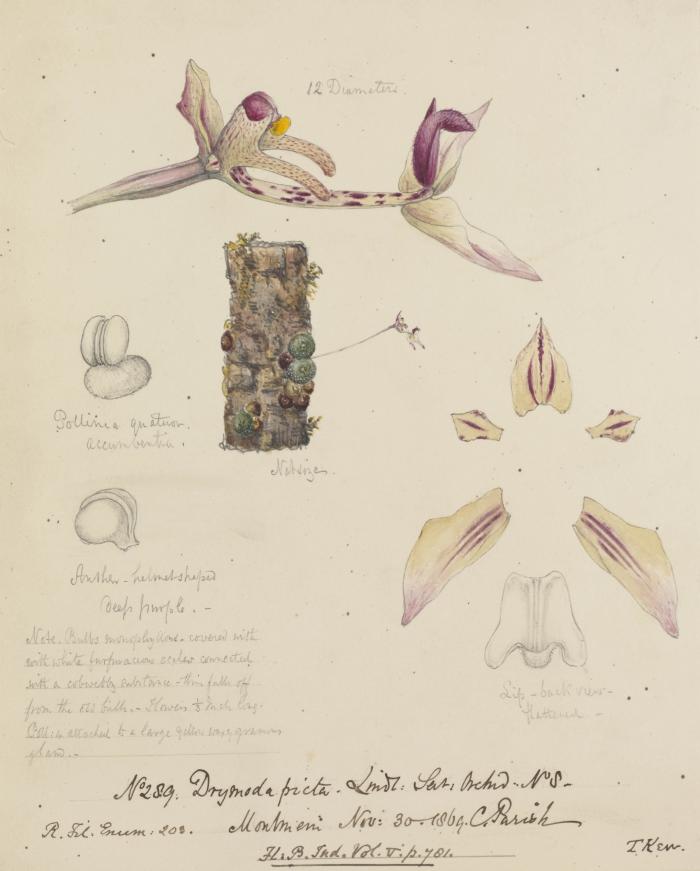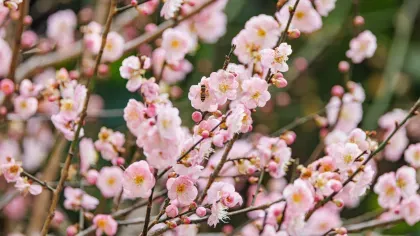C.S.P. Parish and the orchids of Burma
The Directors' Correspondence Team reveals the artistic talents of an amateur orchid enthusiast in Burma at the end of the 19th century.

The Directors' Correspondence team really enjoyed the recent tropical flower and orchid displays as part of this year's Tropical Extravaganza and thought it might be appropriate to highlight the correspondence of an avid orchid hunter we came across in the Asian Directors' Correspondence.
It's quite unusual for us to find very large items in the collection, but at the start of a volume we uncovered a highly detailed hand drawn map. To allow us to photograph the map without damaging it a member of our preservation team carefully unfolded, flattened and carried out repairs along the fragile creases. A little research revealed that the map was from a Mr C.S.P. Parish.

Detail of a map by Parish of a collecting trip c.1859. The hand drawn map depicts an area of Burma from Beloo Gyoon (Bilugyun) Island in the West to the 'Shan Country' in the East. Geological and botanical features have been added. DC Vol. 56 .f1. (Image: RBG Kew)
Charles Samuel Pollock Parish was born in Calcutta, India in 1822. Educated at Oxford University, with a Bachelor of Arts he entered into the ministry and in 1852 was sent to Moulmein, (now Mawlamyaing), Burma. Initially Parish sent plants to his correspondents in England for identification, particularly to Kew's first Director Sir William Jackson Hookerand another well known botanist, John Lindley. In his correspondence Parish initially demonstrates a great interest in ferns and mosses, which he eagerly collected and examined. Whilst out hunting for mosses he came across a new orchid which Lindley named Porpax parishii in his honour, and so began Parish's lifelong interest in this family of plants. At one point he tells Hooker that he has over 100 orchid species growing in his compound.

Charles Samuel Pollock Parish (1822 - 1897) (Image: RBG Kew)
Parish made an annual tour to Tavoy and Mergui and explored many 'terra incognita' with a gentleman named Major Tickell, a keen ornithologist. Several of Parish's letters provide detailed accounts of collecting trips and the difficulties he encountered from inaccessible limestone rocks, using elephants as orchid bearers and being permitted very little leave from his official duties for his botanising. In one unhappy instance he records the loss of seven cases of plants on board a steamer in the Ganges. The cases contained seeds and drawings representing everything he had collected on his trips to the Shan states and Tavoy district. Many of these species he believed he would never find again. On another occasion he records the sad loss of one of his knowledgeable and faithful collectors who died on a recent trip to the jungle. The collector set a fire to drive a wild pig out of its lair, but the flames engulfed the tree that he had climbed to get out of the way.
In spite of setbacks Parish made a host of new plant discoveries including Cymbidium tigrinum, found in the Tenasserim Mountains. Species of Coelogyne, Habenaria, and Vanda are named in commemoration of him, as well as Parishia, a nonorchidaceous genus from Malaya. We also have a number of Parish's plant specimens in Kew's herbarium including c.45 type specimens.
As well as providing detailed accounts of his plant collecting Parish's correspondence also contains more light hearted remarks on the botanical works of the day. For instance he enjoyed reading an account of the Durian fruit given in a paper by Alfred Russell Wallace but feels that a record should also be given by somebody who dislikes the fruit: Parish is repulsed by its smell, said to resemble rotting onions or turpentine, and notes that if hung in a closed painted room for a day, then any dirt can easily be removed from the walls afterwards!
Parish was a talented painter and illustrator and often transmitted sketches to Hooker to aid the identification of his specimens. In 1871 Parish came to England with a large collection of his drawings and presented these to Kew and they are part of our Library, Art and Archives collection today. In 1878 Parish retired and returned to Somerset, England, continuing his interest in orchids and botany in general. He died quietly in his sleep in 1897, at the age of seventy-five.

A watercolour sketch of the orchid Drymoda picta observed at Moulmein, November 1869, from Parish's 'Drawings (coloured) of Orchidaceae (executed chiefly at Moulmein between the years 1856 and 1874)' (Image: RBG Kew)



